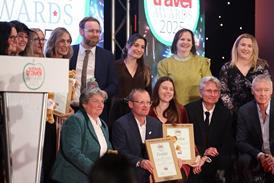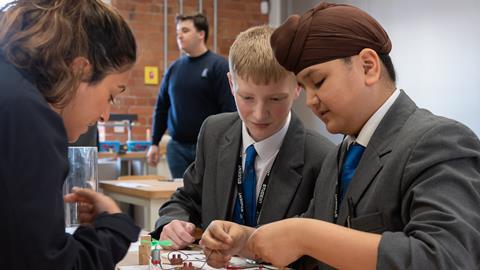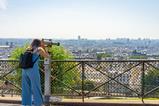21 off-the-beaten-track attractions that offer brilliant learning experiences for your school group from heritage destinations and science venues to wildlife centres and sculpture parks.
While iconic destinations like the Natural History Museum, Warwick Castle and the Tower of London offer exceptional educational experiences, they often come with crowds, premium pricing and the challenge of securing bookings during peak times. Look beyond the big sites and you can find an array of hidden gems that offer meaningful learning opportunities for your school group, often at lower cost.
Your students can delve into our industrial past, explore Roman ruins, discover the history of medicine, get creative or search for alien life forms. We’re shining a light on 21 hidden gems that will get your students excited about what they’re learning in the classroom…
Wildlife Wonders
Dartmoor Zoo, Devon: Experience conservation in action at this award-winning zoo nestled in wild Dartmoor landscapes. Students can study animal behaviour, see big cats up close, and get involved with endangered species breeding programs and animal care workshops.
National Botanic Garden of Wales, Carmarthenshire: Explore the world’s largest single-span glasshouse, try plant propagation workshops, and study biodiversity in reconstructed global environments while learning about real conservation work.
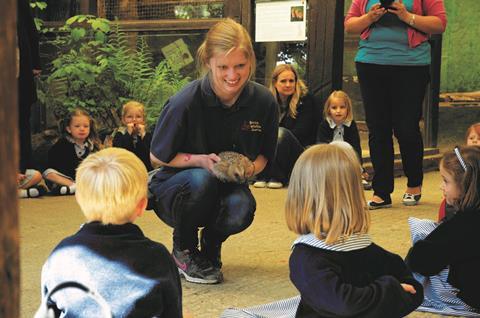
British Wildlife Centre, Surrey: Become wildlife detectives and explore Britain’s natural heritage, getting up close with over forty native species. From red deer and pine martens to otters and owls, students will see guided feeding sessions, learn about conservation breeding programmes, and discover how British wildlife adapts to changing environments in authentic woodland settings.
Literary Landscapes
Dove Cottage and the Wordsworth Museum, Grasmere, Cumbria: While the Lake District attracts many visitors, Wordsworth’s actual home remains surprisingly personal.

Students can sit in the poet’s writing room, explore the garden that inspired his nature poetry, and pen their own musings about daffodils in creative writing workshops whilst surrounded by the landscapes that shaped Romantic literature. The museum’s manuscripts and personal effects provide an authentic connection to literary history.
Puzzlewood, Forest of Dean: Enter an enchanted maze of ancient pathways and mysterious rock formations that inspired Tolkien’s Middle Earth. Geography, geology, and literature merge in this magical woodland that sparks imagination while delivering serious educational content.

Bodleian Libraries, Oxford: Europe’s oldest library system where medieval manuscripts meet cutting-edge scholarship. Students can examine 900-year-old illuminated texts, explore Harry Potter filming locations, and take part in authentic medieval book-making workshops.
Scientific Stories
Jodrell Bank Discovery Centre, Cheshire: Home to the iconic Lovell Telescope, students get the chance to control real radio telescopes, take part in space mission simulations, and explore the Search for Extra-Terrestrial Intelligence programme in an active research environment.
Magna Science Adventure Centre, Rotherham: Students become scientists in a cathedral of steel and fire. Built inside a former steelworks, Magna delivers explosive science through deafening machinery, blazing furnaces, and hands-on experiments exploring earth, air, fire, and water.
Thackray Medical Museum, Leeds: Step into the gruesome and fascinating world of medical history. Wander through the grimy streets of Victorian Leeds, watch gruesome operations taking place in a 19th century operating theatre, visit a seventies-style sexual health clinic, see how well the world responds to crisis and discover the medical innovations that changed the world.
The Hunterian Museum, Royal College of Surgeons, London: This award-winning museum houses everything from Napoleon’s toothbrush to conjoined twins. Trace the history of surgery from ancient times to the latest robot-assisted operations.
Industrial Heritage Rediscovered
Ironbridge Gorge Museums, Shropshire: Explore the valley of invention. The network’s smaller museums like the Jackfield Tile Museum and Coalport China Museum offer extraordinary insights into industrial history without the crowds. Students can handle original Victorian tiles, watch traditional pottery demonstrations, and create their own ceramics using period techniques.
Quarry Bank Mill, Styal, Cheshire: One of our greatest industrial heritage sites, this working cotton mill offers an immersive journey into textile manufacturing and social history. Students can operate real Victorian machinery and explore the preserved mill workers’ village. The Apprentice House offers overnight stays where students experience life as mill apprentices.
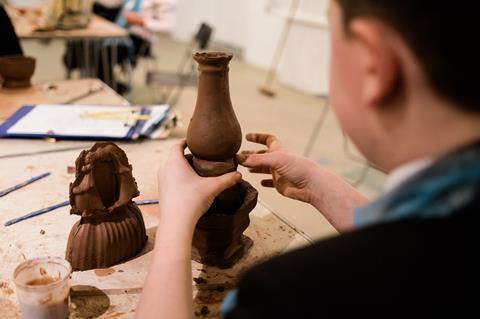
Potteries Museum & Art Gallery, Stoke-on-Trent: Head to England’s pottery capital and discover the origins of the world’s finest ceramics. Students get the chance to see master craftsmen throw clay, explore the world’s greatest Staffordshire pottery collection, and create their own ceramic masterpieces.
Derwent Valley Mills, Derbyshire: Walk through the birthplace of the Industrial Revolution at this UNESCO World Heritage site where water-powered cotton mills changed the world forever. Stretching across 15 miles, Derwent Valley Mills offers a wide range of landscapes, mill sites, wildlife, technology, and engineering to explore.
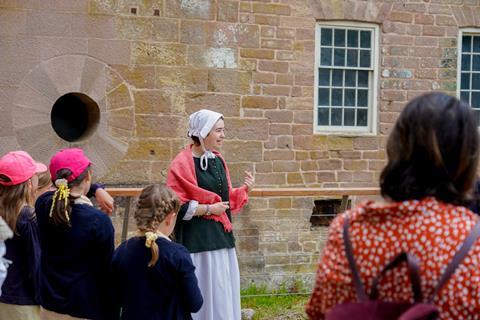
Students can operate authentic Victorian machinery, visit workers’ villages, and witness the transformation from rural England to industrial powerhouse, learning how innovation reshaped society and sparked global change.
Maritime Mysteries
National Waterways Museum, Ellesmere Port, Cheshire: England’s canal network tells a fascinating story of pre-railway transport through boat trips, restored narrowboats, and working lock demonstrations. Students can step aboard a narrowboat, see the cramped conditions boating families lived in and learn traditional rope-making skills.
Golden Hind Museum Ship, Brixham: Step aboard Sir Francis Drake’s legendary vessel and become Tudor explorers. Experience authentic 16th-century seafaring life aboard this full-size replica ship, from cramped crew quarters to navigating by stars.
Art in the Wild
Yorkshire Sculpture Park, Wakefield: This outdoor gallery combines contemporary art with stunning Yorkshire landscapes. Students can get close to world-class pieces and create their own sculptures while exploring the relationship between art and environment.
Forest of Dean Sculpture Trail, Gloucestershire: Discover art amongst ancient woodland at Britain’s first permanent sculpture trail, where unexpected artworks challenge perceptions of creativity and environment while spanning geography, ecology, and contemporary art.
Archaeological Adventures
Caerleon Roman Baths and Fortress, Newport, Wales: While Hadrian’s Wall attracts most Roman history enthusiasts, Caerleon offers equally impressive remains with far fewer visitors. Students can explore Britain’s best-preserved Roman amphitheatre, walk through authentic barracks, and handle genuine Roman artefacts.

Creswell Crags, Derbyshire/Nottinghamshire: An archaeological park with limestone gorge, caves and a museum. Creswell Crags is home to Britain’s most northerly paleolithic cave art. Students can explore caves where our ancestors sheltered 50,000 years ago, examine genuine paleolithic tools, and get hands-on in flint-knapping workshops.
Craven Museum, Skipton: This small museum earned Art Fund Museum of the Year recognition for bringing Yorkshire Dales history to life. Interactive displays, archaeological treasures and storytelling bring this fascinating region to life for students.
Making the most of hidden gems
By stepping away from busy major attractions, you’ll get personal attention, flexibility and authentic experiences. Many venues offer exclusive group rates, extended access hours, and customised programmes that can be adapted to your specific curriculum requirements. These destinations prove that educational impact isn’t measured by visitor numbers, but by the quality of learning experiences they provide.





